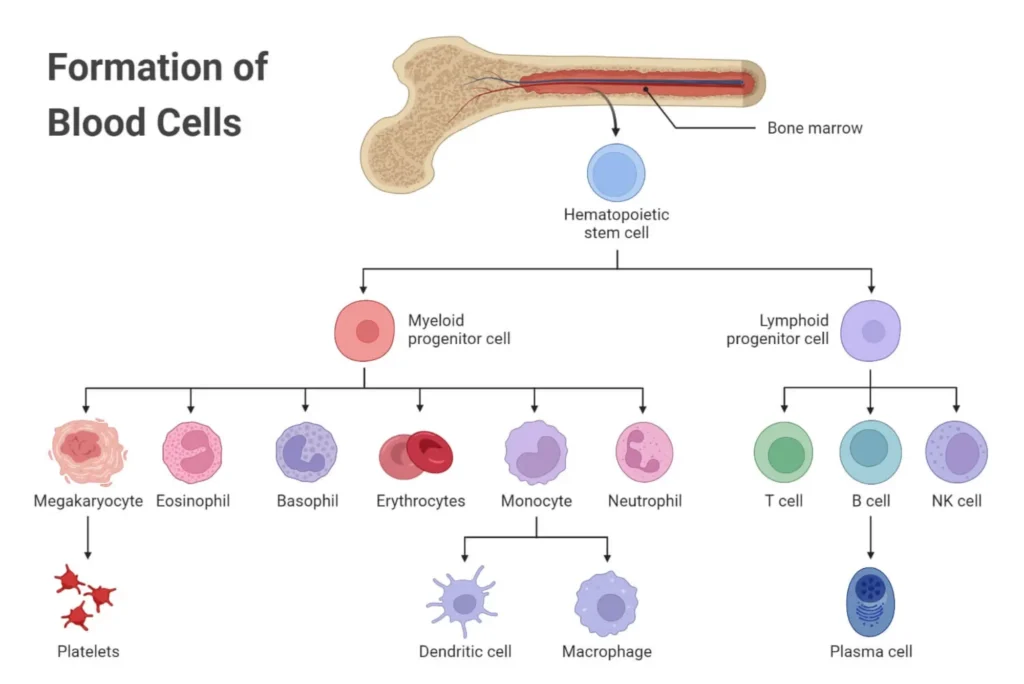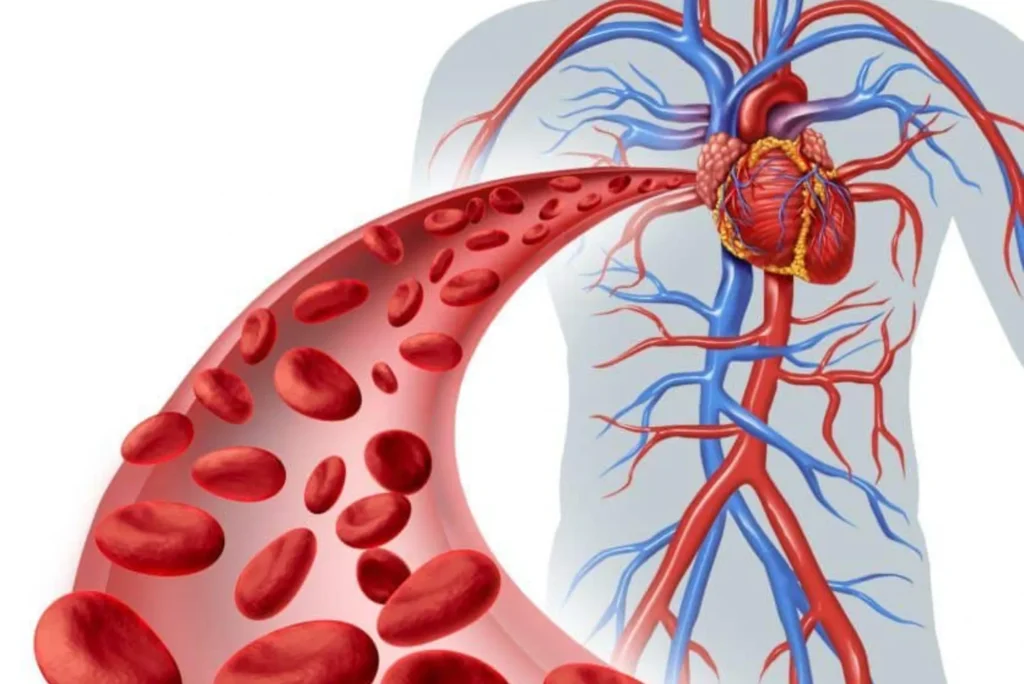Blood is one of the most vital substances in the human body. It serves as the primary medium for transporting oxygen, nutrients, and waste products to and from cells, tissues, and organs.
Without blood, the human body would not be able to survive. But have you ever wondered where blood comes from? This article delves into the fascinating process of blood formation, the role of bone marrow, and how blood circulates through the body to perform its essential functions.
What is Blood?
Blood is a specialized body fluid that circulates throughout the human body, delivering necessary substances like oxygen and nutrients to cells while removing waste products. It consists of four primary components: plasma, red blood cells (RBCs), white blood cells (WBCs), and platelets.
Plasma, which makes up about 55% of blood, is a yellowish liquid that carries proteins, hormones, and waste products. Red blood cells, the most abundant type of cell in blood, are responsible for transporting oxygen from the lungs to the body and returning carbon dioxide to be exhaled.
White blood cells are part of the immune system, defending the body against infections, while platelets are involved in blood clotting to prevent excessive bleeding.
The Process of Blood Formation

The creation of blood is a complex and highly regulated process known as hematopoiesis. Hematopoiesis begins in the bone marrow, the spongy tissue found in the center of bones, particularly in the ribs, sternum, and pelvis. This process involves the production of blood cells from stem cells, which are undifferentiated cells capable of developing into various types of specialized cells. Blood cell production is crucial for maintaining a healthy supply of RBCs, WBCs, and platelets, as the body constantly replaces old or damaged blood cells.
Bone Marrow: The Blood Factory
Bone marrow is often referred to as the “blood factory” due to its critical role in blood cell production. It is a soft, spongy tissue located inside certain bones, and it is here that the majority of blood cells are produced. There are two types of bone marrow: red marrow and yellow marrow.
Red marrow is actively involved in hematopoiesis, whereas yellow marrow mainly consists of fat cells and serves as an energy reserve. In infants and young children, most of the marrow is red, but as we age, more of the marrow turns yellow.
Within the red bone marrow, hematopoietic stem cells are the key players in blood formation. These stem cells have the ability to differentiate into various types of blood cells, including RBCs, WBCs, and platelets. This process is tightly regulated by growth factors and hormones to ensure that the body maintains a balanced number of each type of blood cell.
The Role of Stem Cells in Blood Production
At the heart of blood production are hematopoietic stem cells, which are multipotent cells found in the bone marrow. These stem cells are capable of developing into all types of blood cells through a process known as differentiation. Hematopoietic stem cells first differentiate into two main progenitor cells: myeloid progenitor cells and lymphoid progenitor cells.
Myeloid progenitor cells give rise to red blood cells, platelets, and certain types of white blood cells, while lymphoid progenitor cells develop into other white blood cells, including T cells and B cells, which are essential for immune function.
This differentiation process is influenced by various signaling molecules, including erythropoietin (which stimulates red blood cell production) and thrombopoietin (which promotes platelet production).
How Blood is Circulated

Once blood cells are produced in the bone marrow, they enter the bloodstream and are circulated throughout the body. The heart plays a crucial role in this process by pumping blood through a vast network of blood vessels, including arteries, veins, and capillaries.
Oxygenated blood is pumped from the heart to the lungs, where it picks up oxygen, and then it is carried through the arteries to the rest of the body. After delivering oxygen and nutrients to cells, the blood returns to the heart through veins, carrying carbon dioxide and waste products to be expelled from the body.
The circulatory system is a closed loop, ensuring that blood is constantly being pumped and replenished to meet the body’s needs. The heart, with its four chambers, works in a synchronized manner to maintain this continuous flow of blood.
Blood Production Throughout Life
Blood production begins early in embryonic development. Initially, blood cells are produced in the yolk sac, followed by the liver and spleen. As the fetus matures, the bone marrow gradually takes over as the primary site of blood cell production.
After birth, the bone marrow continues to produce blood cells throughout life. In adults, the red bone marrow in the ribs, sternum, and pelvis is responsible for the majority of blood cell production.
As people age, the rate of blood production may slow down, and the body may become less efficient at replacing damaged or lost blood cells. This can contribute to certain age-related health conditions, such as anemia, where there is a deficiency of red blood cells.
Disorders of Blood Production
While the body is generally efficient at producing blood, several disorders can disrupt this process. Anemia, for example, occurs when the body does not produce enough red blood cells or when the red blood cells are not functioning properly.
This can lead to fatigue, weakness, and other symptoms. Leukemia, a type of cancer affecting the bone marrow, can result in the overproduction of abnormal white blood cells, which can interfere with the body’s ability to fight infections.
Bone marrow failure is another condition in which the bone marrow fails to produce enough blood cells, leading to low levels of RBCs, WBCs, and platelets. This can result in a variety of symptoms, including frequent infections, excessive bleeding, and fatigue.
Blood is essential to the human body, performing a wide range of critical functions that support overall health and well-being. Understanding where blood comes from, how it is formed, and the role it plays in the body helps us appreciate the complexity and importance of this vital substance.
Blood production begins in the bone marrow, where stem cells differentiate into the various types of blood cells needed for survival. Throughout life, the body continues to produce blood cells to maintain a healthy balance.
When blood production is disrupted, it can lead to serious health conditions, highlighting the importance of maintaining a healthy blood supply.




